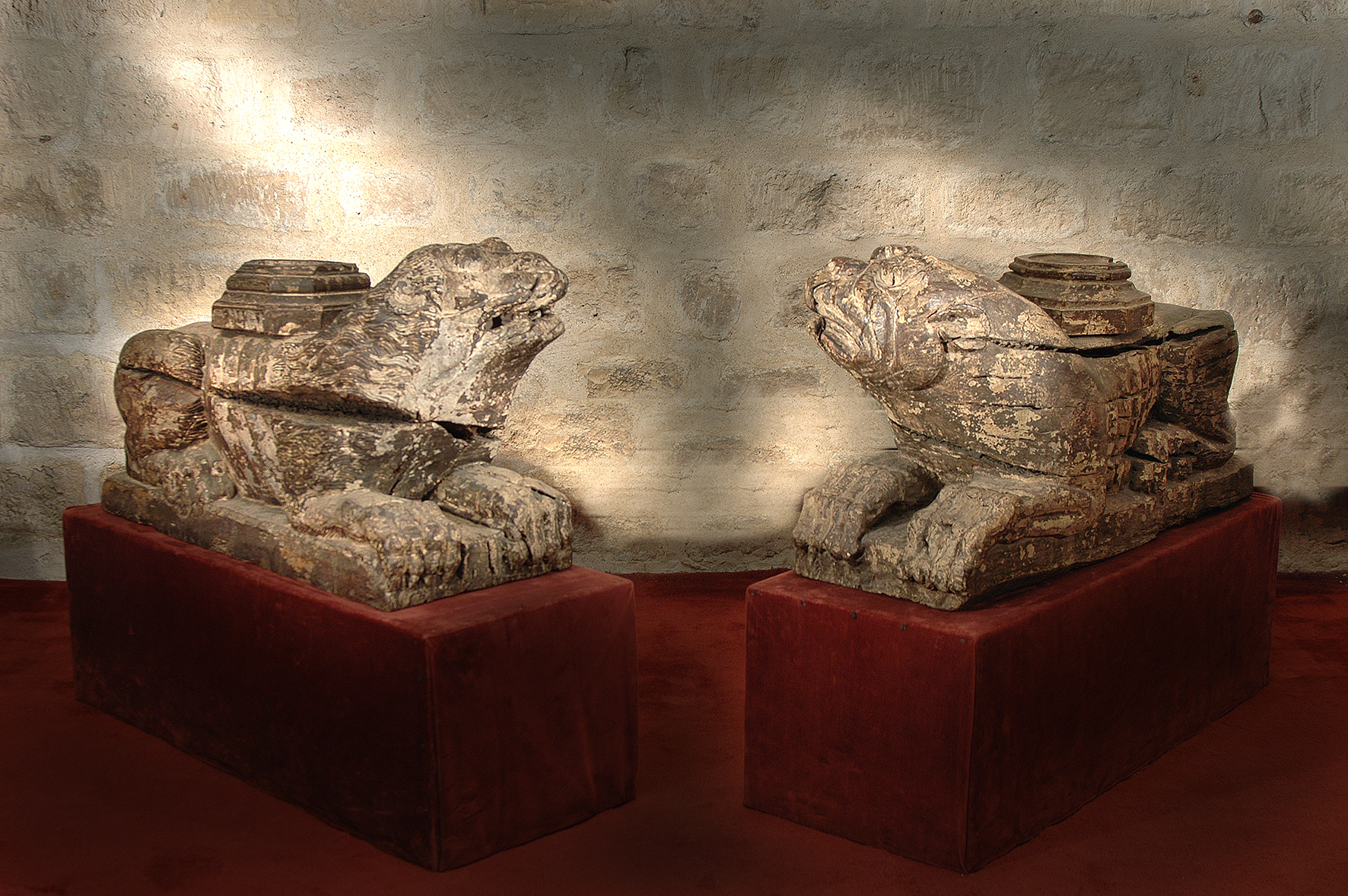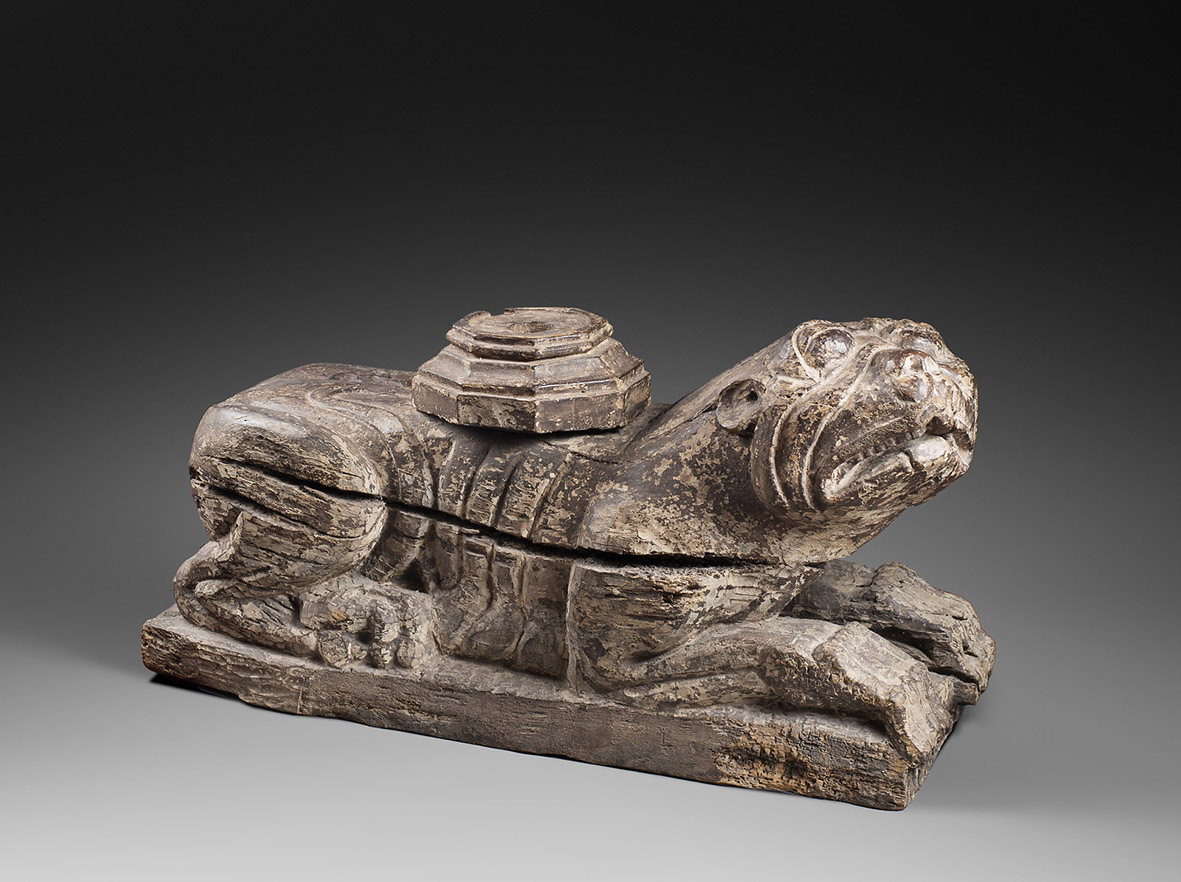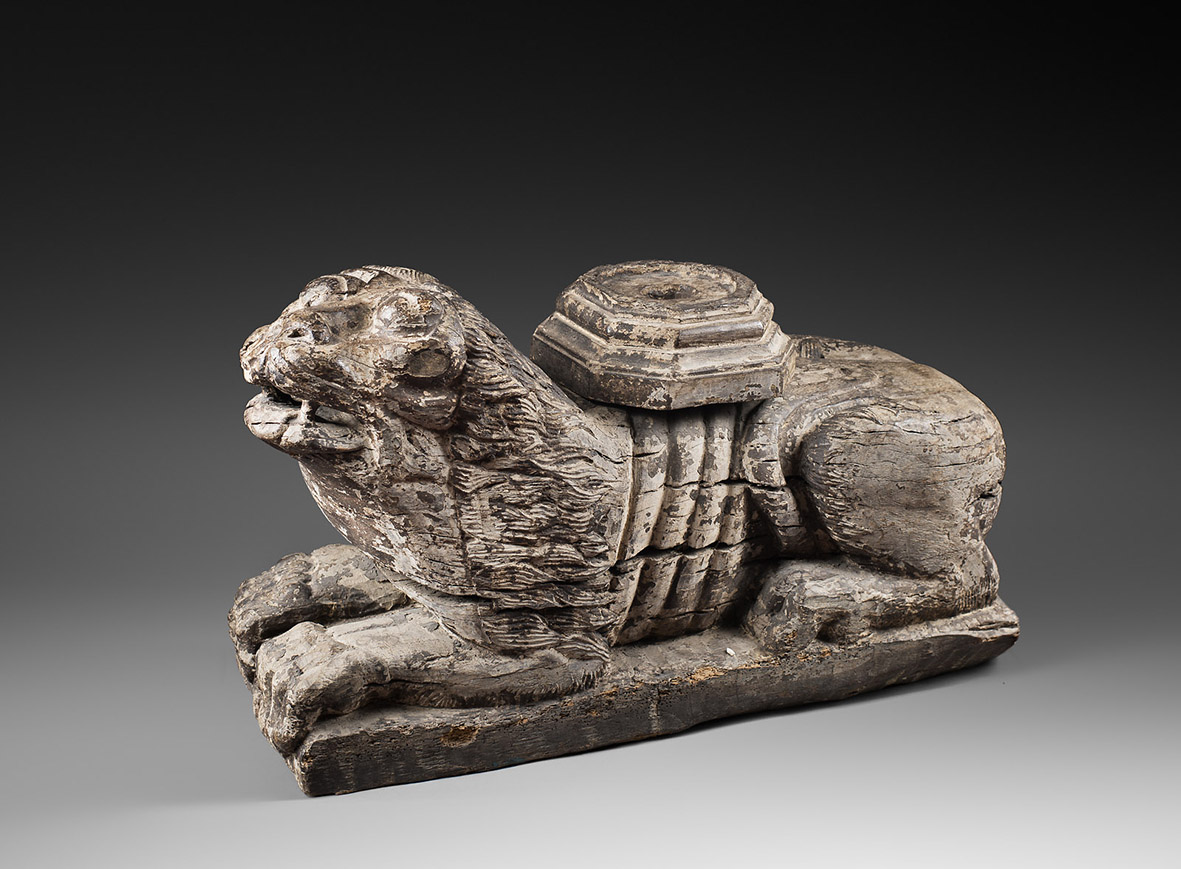Description
The lioness is sculpted in the round from a fine wood bearing today the marks of time. The animal is depicted on its stomach with the front legs lying flat and the back legs bent. The sculptor have carved well defined ribs on the animal flanks. The lion’s head is slightly raised with its mouth open showing fangs. The bulging eyes are typical of the early Romanesque style. On its back the lioness carries a moulded polygonal base with a socket in its center. This is where the column was inserted.
The male lion design matches the female’s. The front legs are precisely depicted and seem to grasp the sculpture’s terrace. The lion’s tail, as for the female, goes under the bend thigh and bruch soflty the flank. The mane is described with a fine surface work designed as striated strands of hair. The orderly layering of strands gives a certain thickness to the motif. The male lion also caries a base on its back.
The term stylophore designates the function of these architectural elements. It comes from the greek words style, ‘column’ and phora ‘carry’. The earliest example of stylophore lions applied to Christian architecture can be found in the 11th century northern Italy. The cathedral of Modena, signed in 1099 by the sculptor Wiligelmo and the architect Lafranco, presents a portal framed by a pair of antic stylophore lions. The american art historian Kingsley-Porter sees in this reuse of lions from the Antiquity the starting point a phenomenon – the lion framed portal – that has then spread to all of Europe during several centuries.
Indeed this Romanesque pattern can be seen in many places such as the portals of the cathedral of Ferrara (late 12th century), the cathedral of Fidenza (late 12th century), the conventual church of San Quirico in Orcia (late 12th century), the cathedral of Bozen in
the Italian Tyrol, Saint Nicolas church in Werden, Westphalia (today destroyed), San Zeno Maggiore basilica in Verona, the cathedral of Embrun in France (early 13th century). In the French Alps the church of Saint Véran was rebuilt during the 17th century and reused the stylophore lions of the previous building.
According to the great Medieval art historian Emile Mâle the use of the lion was no more than decorative, probably influenced by oriental textiles. However this motif could hide a deeper meaning as expressed by the late Antiquity textual sources.
The Physiologus is a Christian treaty written between the 2nd and the 4th century. It is a real exegesis dedicated to the animal kingdom, an amazing bestiary in which the author establishes a Christian typology. Through their proprieties and characteristics the animals become images of Christ and role models of a Christian life. And the Lion holds an important place in its typology. It is said that the animal removes its traces with its tail while walking and the author sees this as an evocation of Jesus who lived amongst men without revealing Himself. We also learn that when the lioness litters the lion cubs come alive the third day, similarly Christ resurracted on the third day. Finally the Physiologus explains that the lion sleeps with its eyes wide open and this information excuse perfectly its use as a guardian.
To place lions on church’s portals was meaningful. During the Middle-Ages a widespread custom was to ensure justice in front of the church’s portal, the southern portal exactly. It is evoked today by spandrel reliefs depicting the Solomonic trial (Strasbourg, France or Leon, Spain). This portal could be protected from the elements and from the crowd by a roof and a fence. The use of lions – symbols of strength and bravery – also evoked Solomon, the examplary judge, as it is said his throne was framed by felines. The lion embodied the legal power as well as the tribunal’s sovereignty. A latin expression speaks about the importance these lions took. It was said that acts of justice were concluded inter duos leones.
However, lion-shaped supports could be attributed to other elements. Ambons, baptismal fonts, pulpits. In Rome, at the archbasilica of Saint John Lateran can be seen a pair of stylophore lions in one gate of the cloister gallery.
This wood carved pair of stylophore lions is an extremely rare piece because of the fragile nature of its material and because of the inexistence of known comparisons in public and private collections. Unsuitable to support a marble column this pair of lions reminds us that the most humble churches were timbered buildings. Sainte Madeleine church in Trie-le-Château, France is a rare witness of timbered churches with its gable wall from 1200. Likewise it was not unusual to have a porch entirely made of wood, contiguous to the wood, brick or stone facade. This was the configuration to which used to belong our pair : the two lions were the base of a wooden porch.
This couple of Romanesque wood stylophore lions is a very rare piece conveying an architectural landscape and customs that today have disappeared as well as a delicate testimony of the Medieval sculptor’s naturalistic experiments.



